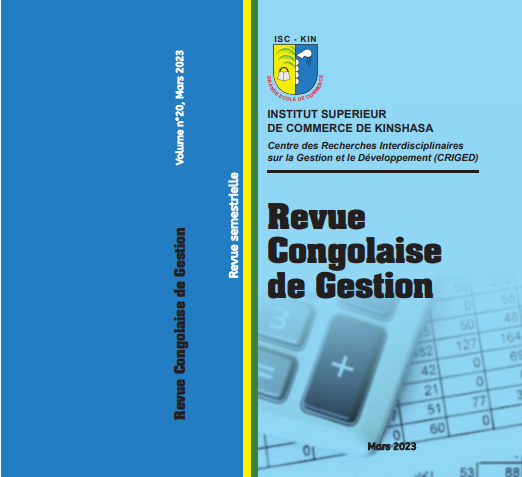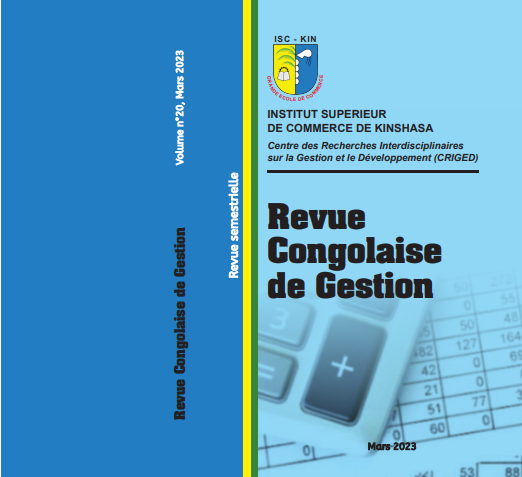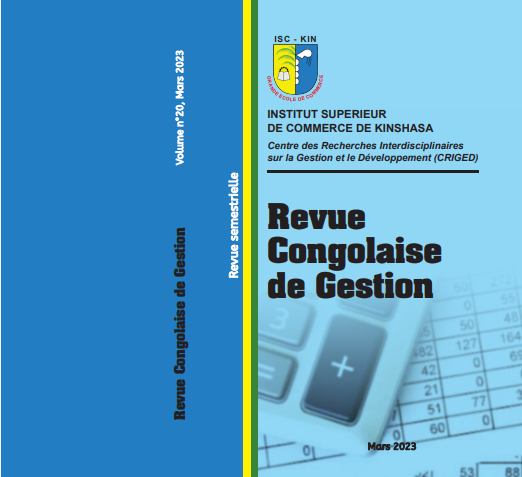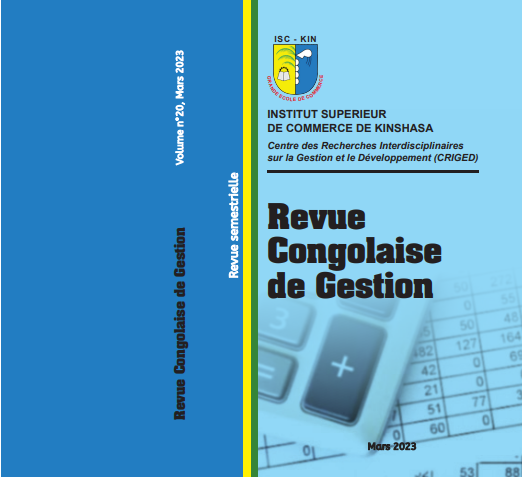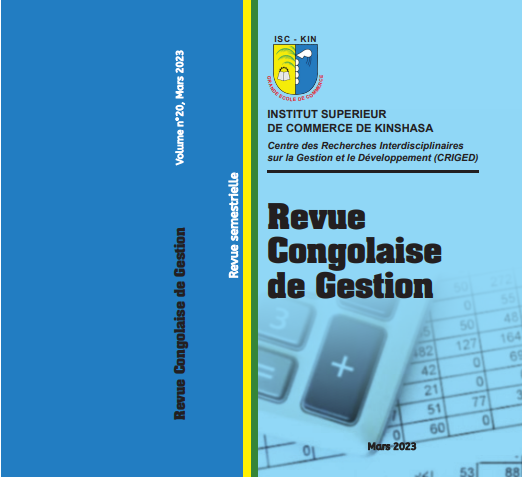Auteur(s)
Guillaume IYENDA
Institut Supérieur de commerce de KinshasaMots-clés
footsteps, lighthouse, worldwide .Résumé
ities were common in precolonial Africa and African societies from North to South lived in cities before the arrival of western colonisers in the continent. Traditional societies in Africa developed cities with royal courts, an administration, an army, a police force and other urban services. When western colonisers arrived in Central Africa in the 19th century, they found that the majority of African lived in rural areas while 10% of them lived in cities.
While the majority of population in Central Africa is currently living in rural areas, most countries in the region have been experiencing an urban revolution since their independences. In the last twenty years only, Africa has experienced the fasted urban growth in the developing world at 3.5% per year on average and this trend of urban growth is expected to continue until 2050. By 2025, some African countries will account for more than 85% of urban population.
As Sachs[ Sachs. W. The Development Dictionary : A Guide to Knowledge as Power, zed Books, 1992, p. 1] indicated,‘the lighthouse of development was erected right after the Second World War. Indeed, Third World concerns against poverty and underdevelopment increased immediately after the end of the second World War. Following the breakdown of the European colonial powers, the United States found an ....
Références
Iyenda, G. Case Study for the AFRICITIES Conference Report 2015 : The City of Dar es Salaam in ‘Shaping the Future of Africa with the People. The Contribution of Local Authorities to the Agenda 2063 of Africa’, Johannesburg, December 2015, p.1, unpublished
African Development Bank, Urbanisation in Africa, ADB, Tunis, 2012, accessed on http ://www.afdb.org/en/blogs/afdb-championing-inclusive-growth-acrossafrica/post/urbanization-in-africa-10143/
Sachs. W. The Development Dictionary : A Guide to Knowledge as Power, zed Books, 1992, p. 1
UNDP, Human Development Report 2019. Beyond Income, beyond Averages, beyond Today : Inequalities in human Development in the 21st Century, Washington, December 2019.
Macpherson, S. and R. Silburn. ‘The meaning and measurement of poverty’, in J. Dixon andD. Macarov(eds.) Poverty : A Persistent Global Reality, London : Routledge, 1998.
UNDP, Human Development Report 1995, New York, NY : Oxford University Press, 1995.
George, V. and I. Howards (1991) Poverty Amidst Affluence : Britain and the United States, Aldershot :Edward Elgar, 1991, p.6.
Streeten, P. Thinking about Development, Cambridge : Cambridge University Press., 1995, p.37
Rowntree, B. S. Poverty : A Study of Town Life, London : Macmillan, 1901.
Iyenda, G. Households’ Livelihoods and Survival Strategies among Congolese Urban Poor. Alternative to Western Approaches to Development, New York and Ontario, The Edwin Mellen Press, 2007.
World Bank Group. World Development Report 2022 : Finances for an Equitable Recovery, Washington 2022. 65 Idem
World Bank Group. World Development Report 2022 : Finances for an Equitable Recovery, Washington 2022.
Idem.
Foster. J, Lopez-Calva. L and Szekely, M. Measuring the Distribution of Human Development : methodology and an application to Mexico,Pages 5-25, Published online : 22 Jan 2007.
Batkinson A., On the Measurement of Inequality, Journal of Economic Theory, Volume 2, Issue 3, September 1970, pages 244-263
World Bank Group. World Development Report 2022 : Finances for an Equitable Recovery, Washington DC, 2022.
More details on this section can be found on Iyenda, G., Case Study for the AFRICITIES Conference Report 2015 : The City of Kinshasa in ‘Shaping the Future of Africa with the People. The Contribution of Local Authorities to the Agenda
of Africa’, Johannesburg, December 2015 73 A Teke and Humbu word meaning salt.
De Saint Moulin, L. Contribution à l’Histoire de Kinshasa (I), Zaïre Afrique, No 108, Kinshasa, 1976, pp. 461-474
Idem, p.463.
Iyenda, G. Households’ Livelihoods and Survival Strategies among Congolese Urban Poor. Alternative to Western Approaches to Development, New York and Ontario, The Edwin Mellen Press, 2007.
Vansina, J. The Tio Kingdom of the Middle Congo 1880-1892, London and New York – Toronto, 1973 P.250-251 and 259-26
For more details, read Iyenda, G., 2007, Op. Cit., P.68
Mwanza, W-M. Le transport urbain à Kinshasa. Un noeud gordien, Cahiers Africains, N0 30, Bruxelles, 1977
De St Moulin, L. Perspectives de la Croissance Urbaine au Zaïre, Zaïre - Afrique, Kinshasa, 1977.
Source : United Nations., World Population Prospects, UN DESA/POP/2021/TR/ NO.3, United Nations, New York, 2022
Democratic Republic of Congo. National Institute of Statistics, Ministry of Planning, Kinshasa, 2015
The World Bank Group. The Democratic Republic of Congo. An Overview, in https :// www.worldbank.org/en/country/drc/overview, consulted on 23 October 2022
Idem.
République Démocratique du Congo, Ministère du Budget, Rapport d’Exécution du Budget de l’Exercice 2021 au Premier Trimestre, Kinshasa, septembre 2021.
République Démocratique du Congo, Banque Central du Congo, Evolution de l’Economie Congolaise, 2012, 2013, 2014, Kinshasa, 2015.
African Economic Outlook, Congo, Democratic Republic. Economic Outlook, http : //www.africaneconomicoutlook.org/en/country-notes/central-africa/congo-democratic-republic/, accessed on 16 July 2015.
The African Development Bank Group. Congo Economic Outlook, in https :// www.afdb.org/en/countries/central-africa/congo/congo-economic-outlook,
Herderschee, J., Mukoko Samba, D. & Tshimenga Tshibangu, M., Résilience d’un géant africain : Accélérer la croissance et promouvoir l’emploi en RDC, Volume I
macroéconomique, Editions Médiaspaul, 2012. Il s’agit d’un ouvrage commandité par la Banque Mondiale.
African Development Bank, Democratic Republic of Congo 2013-2017, Country
Strategy Paper Regional Department Centre, (ORCE/CDFO) June 2013, p. 2
République Démocratique du Congo, National Institute of Statistics, Ministry of Planning, Kinshasa, 2014
Iyenda, G. Iyenda, G. Households’ Livelihoods and Survival Strategies among Congolese Urban Poor. Alternative to Western Approaches to Development, New York and Ontario, The Edwin Mellen Press, 2007.
Iyenda, G. Case Study for the AFRICITIES Conference Report 2015 : The City of Kinshasa in ‘Shaping the Future of Africa with the People. The Contribution of Local
Authorities to the Agenda 2063 of Africa’, Johannesburg, December 2015
Demographic and Health Survey (DRC-DHS II). Supplemental Malaria Report 2013-2014, USAID, April 2015
MacAlistair, E. Social Capital and Poverty Eradication in Barbados, PhD Dissertation, University of London ; 2001, Unpublished, p. 33
Serageldin, I. Foreword, in Collier, P. (ed.), Social Capital and Poverty, Social Capital Initiative Working Paper No.4, Washington, DC : World Bank ; 1998, p. i
Putnam, R. Bowling Alone : America’s Declining Social Capital, Journal of Democracy ; 1995, 6 (1), p. 67
Briggs, X. Brown Kids in White Suburbs : Mousing Mobility and the Many Faces of Social Capital, Housing Policy Debate, 9 (1), 1998 ; p. 178
Portes, A. Social Capital : Its Origins and Applications in Modern Sociology, Annual Review of Sociology ; 1998, Vol.24, 1-24, p. 6
The World Bank Group, World Development Report, Washington DC, 1997, p. 114
Fukuyama, F. Trust : The social Virtues and the Creation of Prosperity, New York : Free Press ; 1995
Rose, T. Some Ongoing Operational Work on Social Capital in Mali, Social Capital Let’s Talk! The World Banks Email Discussion Group, Posting number 17 : 15 April ; 1999.
OECD/Noya A. Clarence E., “Community capacity building : fostering economic and social resilience. Project outline and proposed methodology”, working document, CFE/LEED, OECD, 26-27 November 2009
Iyenda, G. The State of Central African Cities in ‘The State of African Cities 2014. Re-Imagining Sustainable Urban Transitions’, UNHABITAT, Nairobi-Kenya, 2014, p.193
